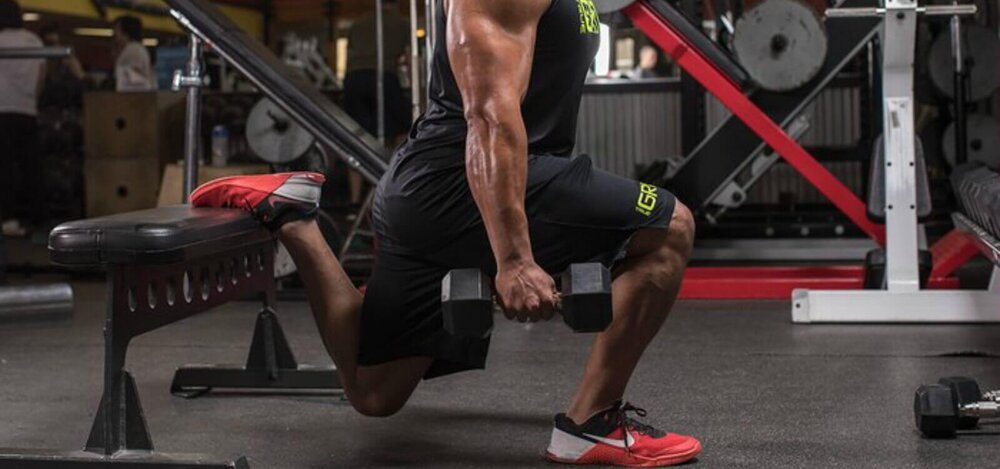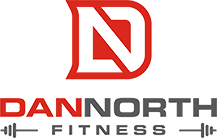Generally speaking, most people choose to follow a program based on the results it has provided for others. Little to no thought or consideration is put into why they think the program will be beneficial for them. Jimmy saw that Johnny got jacked following Program A, so Jimmy does Program A.
The problem with this approach is that it’s usually short lived. A random approach to your training is like going to a buffet blindfolded and filling up your plate. You probably won’t like what you end up with.
The idea of the “best program” or “best exercise” is an illusion. It doesn’t exist. But the programs that yield the best results all share key common traits that contribute to their effectiveness.
Consider some of the underlying principles that all of the best programs utilize and use them as your guiding point when organizing your training split.
1. A WARM-UP EVERY SESSION
The warm-up is essential when it comes to your performance. When done correctly, it sets you up for success. When avoided, you’re setting yourself up for failure (or injury).
Rather than brushing the warm-up aside as an afterthought, start taking it as seriously as your workout. In fact, the warm-up is part of the workout. Movement is movement. And if you walk into the gym and try to go from 0-100 without a proper warm-up, you’re not going to perform at the level you’re potentially capable of.
An effective warm-up maximizes your performance while greatly reducing your risk of injury.
As with any topic in the strength world, everyone has an opinion on what they consider to be an “optimal warm-up”. And one of the reasons for differing opinions is the fact that often times, warm-ups are “situation-specific”. For example, a powerlifter is not going to follow the same warm-up as a sprinter.
Although warm-ups should be specific to the training environment, there is a warm-up sequence or “checklist” that seems to work for most people.
Disclaimer: This warm-up protocol may not be ideal for everyone, but nothing ever is. This is the general approach I take with most of my clients and I offer this to you as consideration when constructing your own warm-ups.
A. Foam rolling or soft-tissue work
“When you picture a muscle as a band with a knot in it, the foam roller is what unties the knots. This is what allows us to create tissue length, and what allows us to stretch.” – Mike Boyle, Advances in Functional Training
The benefit of starting the session with some soft-tissue work is it gets you moving, which is the whole point of the warm-up.
It also prepares your muscles for static stretching if you choose to do so after by alleviating built up tension.
Try each of the following foam rolling sequences for 1-2 min.
B. Single joint to multi-joint mobility
Compound movements require a combination of joints working together simultaneously. In order to perform them optimally, you need to prepare the individual joints involved in the movement first.
For example, working on ankle mobility drills and hip opener sequences before squats. Or shoulder mobilization before benching.
In order for the whole puzzle to make sense, you need to put it together one piece at a time.
C. Core engagement (ground-based to standing)
Your warm-up should follow a certain “flow”. Everything you do should transition seamlessly into the next progression.
When you’re performing core engagement drills prior to your lifting, it’s usually a good idea to start from the ground before working your way up to a standing position. The greater surface area you’re covering (i.e. on all fours vs. standing on two feet), the easier it is to engage your core. Remember, your warm-up should have a good flow. Progressing from floor to standing drills follows this criteria.
D. CNS stimulation
Your central nervous system (CNS) is the part of the nervous system that consists of the brain and the spinal cord. Your CNS controls all the cognitive functions of your body. It tells your muscles what to do and when to do it. The stronger the connection is between your brain and your muscles, the better you’re going to perform.
You can perform dynamic and explosive exercises to “heighten” your CNS during your warm-up to maximize your workout. Usually it’s a good idea to use dynamic exercises that closely mimic the movement pattern that’s going to be involved in the workout.
Some things to consider:
- 1-5 reps for 3-5 sets is plenty. Explosive movements like box jumps and med ball tosses are meant to be explosive. You can’t be explosive if you’re doing 20+ reps of something. Keep the reps low and focus on producing as much force as possible each rep.
- Rest 2 min (minimum) between sets. These exercises are taxing both on the body and the nervous system, when done correctly.
- Focus on quality over quantity. Don’t go to fatigue or failure and perform high quality reps.
Example 1: Box jumps before squats
Example 2: Med ball toss before bench
2. DIFFERENT PLANES OF MOVEMENT
One of the biggest flaws when it comes to many programs is the lack of multi-planar movement. Maybe the people who wrote these programs forgot that we don’t move like robots? Maybe they forgot that training is about resiliency? And if you want to build a strong, resilient body, training in various planes of movement isn’t an option, it’s a requirement.
i) Sagittal Plane: Most of the common exercises you see in the gym (curls, lunges, squats, triceps pushdowns).
ii) Frontal Plane: Side to side (lateral) movements such as lateral lunges, oblique crunches, and lateral raises.
iii) Transverse Plane: Rotational movements such as cable twists.
If I could wave a magic wand to make 99% of the programs out there more effective, I’d incorporate more frontal and transverse-specific exercises.
3. CORE TRAINING
The strong fat guys (sorry, but it’s true) like to say that squats and deadlifts are all you need for core training. I don’t entirely disagree, but only if that statement is coming from a really strong fat guy, not just…a fat guy.
More often than not, the people who preach this are the same people you find at Burger King chowing down their post-workout whopper. The idea that you can get enough core training from the big lifts comes more from laziness than any sound reasoning.
Consider this for a moment: If you want stronger arms, you do arm exercises. If you want stronger legs, you do leg exercises. So, doesn’t it make sense to follow the same protocol for the core?
Doing some half-ass sit-ups at the end of your workout won’t cut it, though.
We can dive real fucking deep into everything core-related, but that’s an entire discussion in and of itself.
Rather, consider what the function of the core is: to stabilize the spine while the outer extremities are in motion, and to prevent movement.
A strong core allows power to be generated from the ground up without any loss of force when transitioning between limbs. It’s your center of gravity and where all of your strength stems from. Any program worth it’s salt should incorporate at least some form of core training.
4. PROGRESSIVE OVERLOAD
I think this horse has been beaten enough already, so I’ll spare you the details. And if you read T-Nation, you know that you have to lift progressively heavier weights in order to produce an adaptive response in your muscles and nervous system to get stronger.
The most effective programs (whether it’s Westside, Wendler’s, or whatever) and the strongest people all have something in common: they focus on building strength, not testing it. Rather than maxing out for the sake of ego, they treat each individual workout as a building block to the bigger picture.
So, whichever program you’re following, think long-term strength training that builds continuously overtime. That’s how you get strong.
5. SINGLE LEG WORK
Considering most of the stuff we do involves single leg movement (walking, running, going up stairs), it’s amazing how many programs lack any single leg training.
An effective program will prioritize single leg strength because it corrects imbalances while simultaneously increasing bilateral strength.
Single leg exercises are a great way to develop functional lower body strength while “sparing the spine”. You don’t need to load a bar on your back for split squats, a couple of heavy dumbbells and maybe a weight vest will do (if you’re strong enough).
Summary
The best program doesn’t exist, and it never will. The programs that consistently yield the greatest results share key common traits that you can use as guiding points when constructing your own program.





